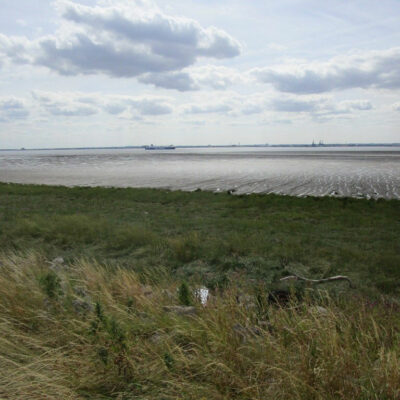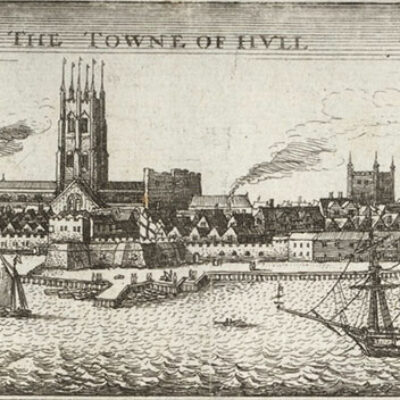Rising Tide of Humber 360 VR film
First launched in 2020, this 360 VR film captures footage from the virtual model of the seventeenth-century town of Hull that we created with digital partners, BetaJester Ltd, as part of the AHRC/ XR Stories Rising tide of Humber project (2019-20).
The film immerses viewers in the experience of flooding caused by violent storms (surviving records describe a ‘hideous Tempest’) which struck Hull in winter 1646-47. In the film, we encounter the Hull poet and politician Andrew Marvell (1621-78), whose well-known poem, ‘To his Coy Mistress’, dates from c.1647 and contains lines referring to flooding ‘by the tide of Humber’ which feature in the film’s final sequence.
The film shows Andrew Marvell leaving Holy Trinity Church (now Hull Minster), having heard a sermon preached there by John Shawe (1608-72). Shawe was a Presbyterian church minster at Hull at the time of the 1646-47 flood. One of Shawe’s surviving sermons, ‘The Three Kingdoms Case’, was preached by Shawe at Hull in 1646 and serves as the inspiration for this section of the film.
Marvell narrates his reaction to Shawe’s sermon in the film, noting that Shawe had attributed the cause of Hull’s flooding to ‘the mighty power of God’. But Marvell himself blames the floods on the ‘greed of the soldiers’ stationed at Hull’s garrison at Drypool, a village to the east of the town of Hull, on the opposite banks of the river Hull.
Marvell goes on to accuse these soldiers of having removed wood from Drypool’s flood defences, and he argues that this had left a significant breach in the banks, and had caused storm water to freely pass through and flood the surrounding level. Marvell’s words here echo accusations which the Drypool villagers had themselves directed at the nearby soldiers at the time of the 1646-47 flood, as surviving records of the flooding, now at the East Riding of Yorkshire archives at Beverley, make clear.
The film was premiered at Freedom Festival, Hull, in August 2020 and also featured within The Waterline Summit 2020.




